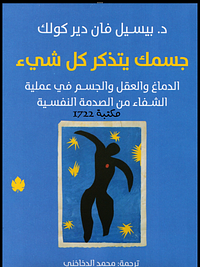Take a photo of a barcode or cover
Greatly helped me in my own journey. Heavy with talking through trauma & PTSD but a great read
hopeful
informative
inspiring
medium-paced
challenging
dark
emotional
hopeful
informative
inspiring
reflective
sad
tense
medium-paced
challenging
emotional
hopeful
informative
inspiring
reflective
slow-paced
Graphic: Child abuse, Rape
One of those books that can actually change your life by helping you to understand yourself better and that can inform how you move forward from trauma
dark
informative
tense
slow-paced
slow-paced
This book is painful to read. The amount of medical language is criminally excessive.
While there were some good points in the book, I did not enjoy it. It is a hard read and did not cover what I thought it was going to cover.
This may be of interest to somebody in the medical field but that is not me.
I also do not care for how he seems to dissuade people from taking medication.
While there were some good points in the book, I did not enjoy it. It is a hard read and did not cover what I thought it was going to cover.
This may be of interest to somebody in the medical field but that is not me.
I also do not care for how he seems to dissuade people from taking medication.
challenging
dark
emotional
hopeful
informative
sad
tense
slow-paced
emotional
reflective
medium-paced
A very empowering book. If you enjoy research analysis I recommend reading this. I enjoyed the multiple chapters on self help and different treatment methods. I thought the epilogue discussing the intersectionality of trauma was also important to add.
Graphic: Mental illness, Self harm, Suicide, Medical trauma
I found this book to be a sort of "trauma 102" class (my 101 was in a yoga training course).
It’s both heart breaking and mind- and heart-opening to read what Dr. van der Kolk has to say about the origins of PTSD, in individuals but also as a recognized medical issue and societal problem. The brain is mysterious, powerful and amazing.
Youalmost never know what people you meet have been through. I have received some training on how to choose cues and treat people in my yoga classes with openness and kindness that gives them room to be, and to grow.
I was a little surprised to learn how powerful things like yoga and role-playing can be, for people trying to move past trauma that effects their lives in very painful ways. Van der Kolk doesn't explain very well how Neurofeedback works, so I'll be following up this book with something on that topic.
Most of the case studies in the book involved severe trauma (kinds that that produce PTSD: child or spouse abuse, war experiences, for exampls), but it seems to me that this book can provide valuable insights to families struggling with the aftermath with slightly lesser trauma, as well.
It’s both heart breaking and mind- and heart-opening to read what Dr. van der Kolk has to say about the origins of PTSD, in individuals but also as a recognized medical issue and societal problem. The brain is mysterious, powerful and amazing.
You
I was a little surprised to learn how powerful things like yoga and role-playing can be, for people trying to move past trauma that effects their lives in very painful ways. Van der Kolk doesn't explain very well how Neurofeedback works, so I'll be following up this book with something on that topic.
Most of the case studies in the book involved severe trauma (kinds that that produce PTSD: child or spouse abuse, war experiences, for exampls), but it seems to me that this book can provide valuable insights to families struggling with the aftermath with slightly lesser trauma, as well.







